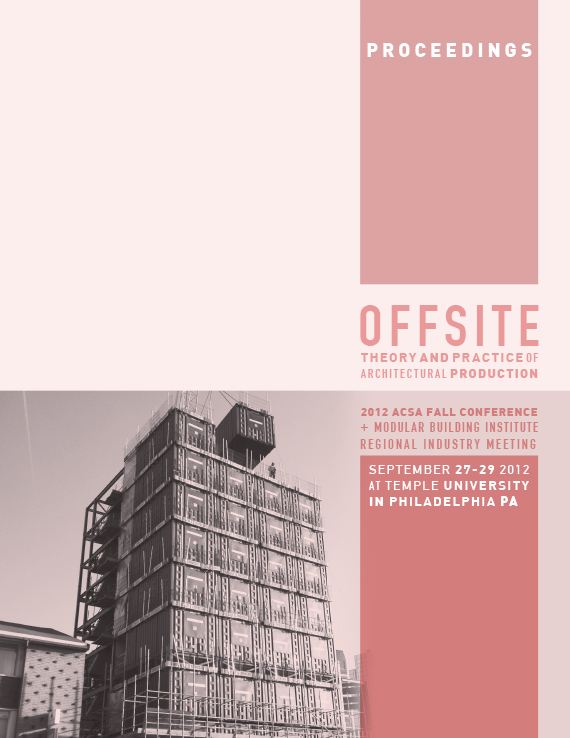Author(s): Kasper Sánchez Viabek
The paper suggests the introduction of the notion of system structure inarchitectural design as a way to conceptualise a systemic level in architectureand construction that lies between general construction techniquesand specific architectural results. In order to make such a system structureoperational, the elaboration of a system structure model has been attemptedthat seeks on the one hand to analytically grasp and on the other hand tomake it possible to actively work with system structures as part of architecturaldesign.Such endeavour has roots in the apparent and continuously increasing gapbetween architectural ideation and the way these ideas are brought to lifeas real physical manifestations of our built environment. Although this splitbetween idea and execution can be traced all the way back to the Renaissance,the pronounced specialisation of the industrial era as well as therecently emerging and fast developing information technology has furtheraccentuated this tendency addressed as the main problem of the thesis.Architectural design and construction have become a hugely complex matterand fragmentation of the knowledge needed to comply with the task producesrisk of incoherent results. At the same time, however, this informationtechnology has also strongly enhanced the ability to deal with complexitythrough data processing in quantities that were unimaginable just a fewdecades ago. New advanced managements tools within all fields based oninformation technology are introduced on a daily basis and both processingspeed and storage capacity doubled within only a few years – while the devicesthat run these software based tools gets smaller and smaller.The notion of system structure and the proposed system structure model isnot an attempt to keep up with this development and follow this track. Ona much more basic level represents a way to look as this complex reality ofconstruction and architectural design through a different kind of lens thatdetects and describes coherent wholes of interdependent elements ratherthan seeking to describe each of these in their outmost detail. In line withthe so-called systems sciences the paper rejects the prevalent scientificview that the degree of detail ‘automatically’ enhances understanding andexplanative power. The concept and the model seek to establish the idea ofa systems view on buildings and architectural design that through the use offlexible constituent elements facilitates discussion about how architecturalwholes are appropriately put together as assemblages of what the currentand future building industry is capable of producing.This is not a reinvention of architecture and architectural creation – it is notan attempt to establish a new architectural paradigm or a different style.It does however represent a new way to look at what is already there – anindustrially produced architecture – and argues that this new view can helpfacilitating a more active use of the present and future building industry inorder to create architecture – not just construction – specifically attached totime, place and cultural context – not just expression of smooth processesor cost efficient solutions.
Volume Editors
John Quale, Rashida Ng & Ryan E. Smith
ISBN
978-0-935502-85-5

 Study Architecture
Study Architecture  ProPEL
ProPEL 
